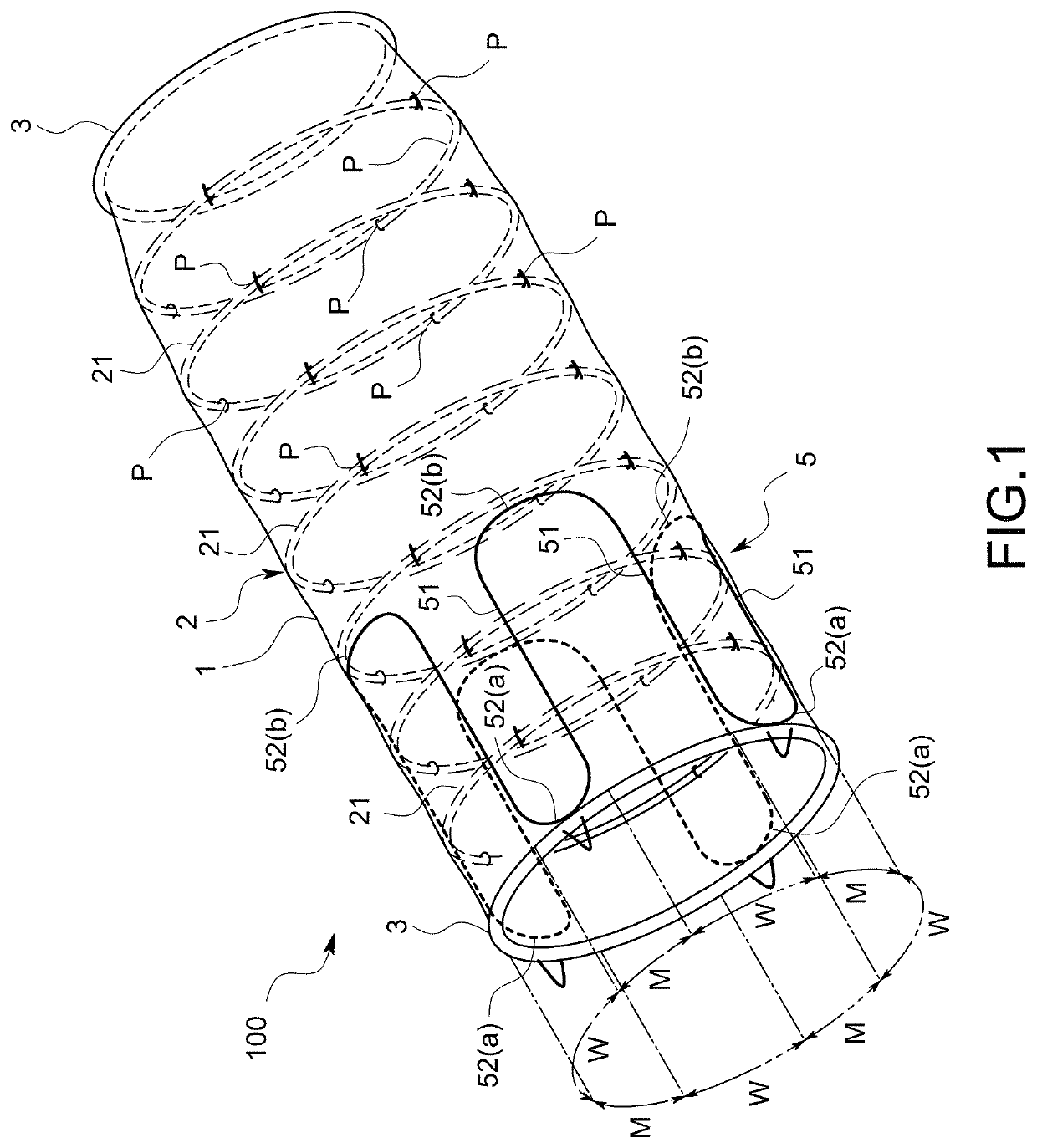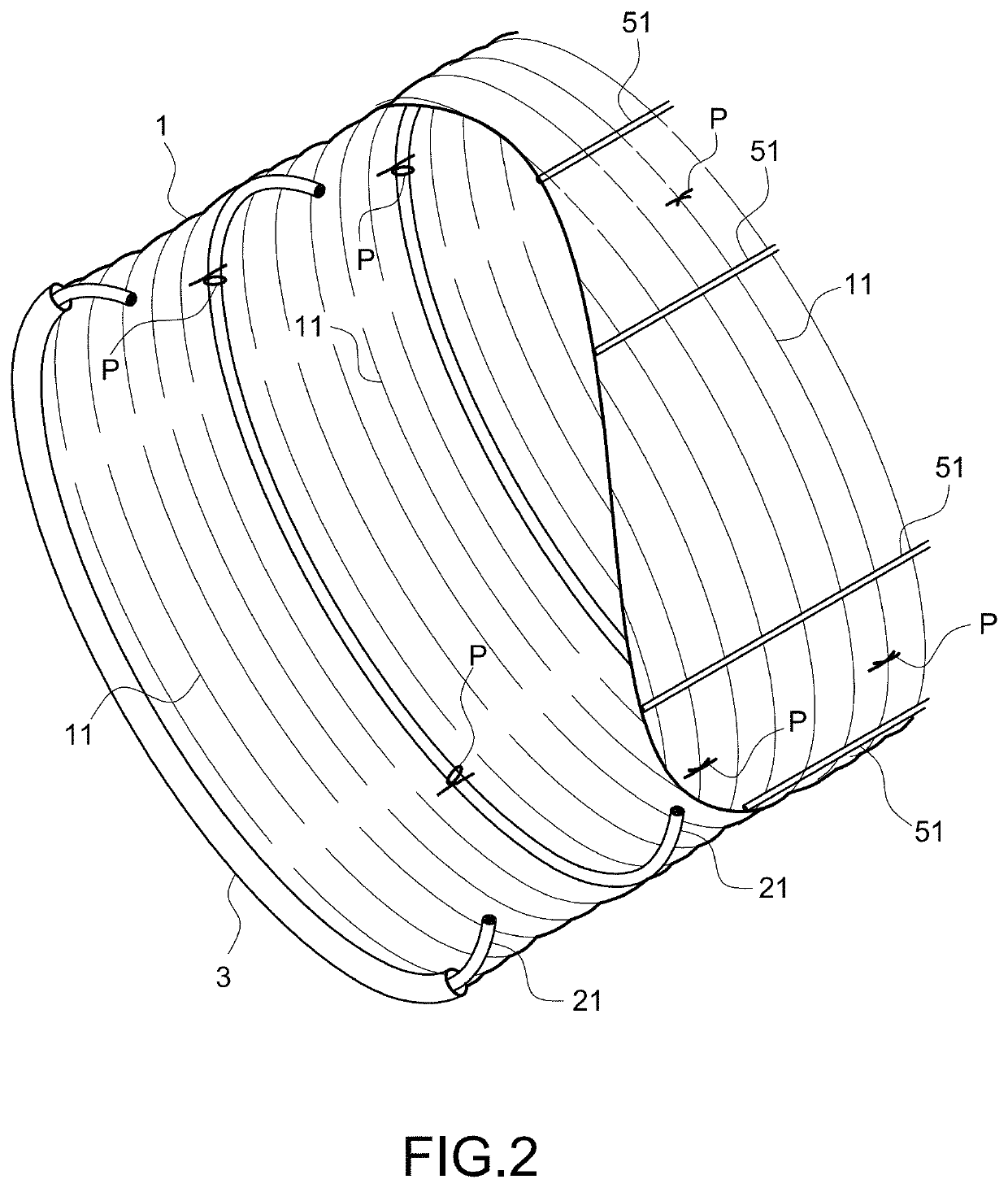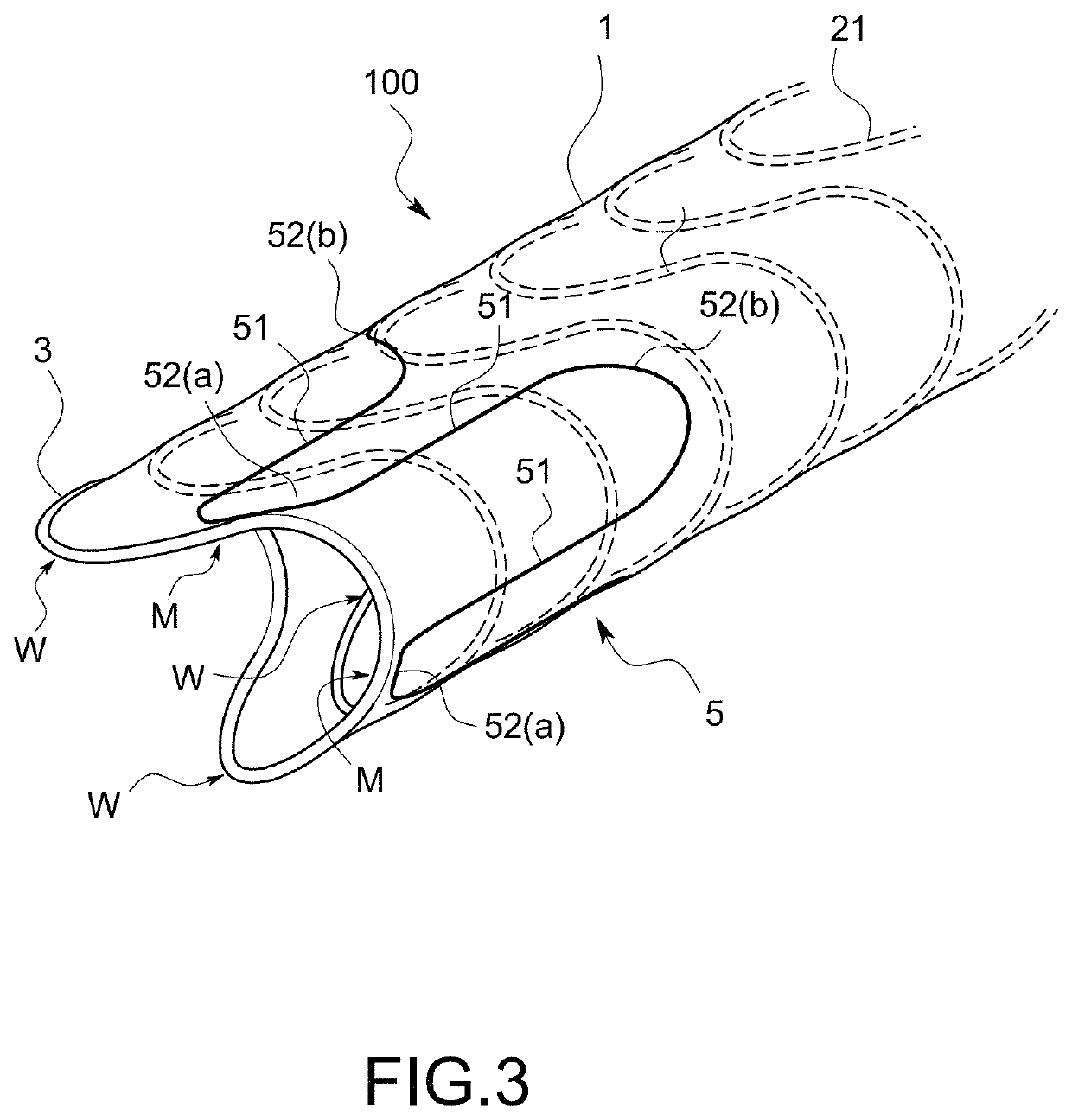Stent-graft
a stent and graft technology, applied in the field of stent grafts, can solve the problems of poor adhesive properties, difficult to get the stent-graft to flexibly follow the movement of the blood vessel, and follow the shape of the curve-shaped blood vessel, so as to prevent blood leakage into the gap, improve the adhesion, and reduce the rigidity
- Summary
- Abstract
- Description
- Claims
- Application Information
AI Technical Summary
Benefits of technology
Problems solved by technology
Method used
Image
Examples
first embodiment
[0059]A stent-graft 100 in accordance with this embodiment comprises a graft 1 (an artificial blood vessel) of a tubular shape whose ends are both open, and a stent 2 mounted on the graft 1 in order to keep the shape of the graft 1 as shown in FIG. 1 and FIG. 2. The stent-graft 100 is transported to and released inside a blood vessel having a lesion portion, such as a thoracic aorta aneurysm or an abdominal aorta aneurysm, via a catheter 200 (shown in FIG. 6 through FIG. 8). Then the stent-graft 100 sticks to an inner wall of a blood vessel due to its own tendency to expand in a radial direction and due to the force exerted by blood pressure in the blood vessel. The stent-graft 100 then functions as an artificial blood vessel by covering the blood vessel walls from the inside.
[0060]The graft 1 is formed into a tubular shape made of a resin sheet that is durable and has little likelihood of reacting with living tissue. As shown in the partial break view of FIG. 2, the graft 1 is conf...
second embodiment
[0121]Next, a second embodiment of this invention will be explained.
[0122]A stent-graft 100 in accordance with this embodiment is arranged to cover the inside the walls of a (distal) aortic arch aneurysm (A).
[0123]A concrete explanation will follow.
[0124]The stent-graft 100 comprises, as shown in FIG. 13, a main tube 101 that is mounted on an aortic arch portion and covers from the inside the walls of an aortic aneurysm (A), and a diverging tube 102 that diverges from one end-part located in the upstream side of the main tube 101, and that is inserted into a left subclavian artery (B1).
[0125]A basic configuration of the main tube 101 is the same as that of the stent-graft, having a single tube, in the first embodiment. More specifically, the main tube 101 comprises a first graft (1A), multiple elastic rings (21A) mounted on the first graft (1A), and auxiliary elastic wires 5, of which one is arranged at the upstream side opening, and the other at the downstream side opening of the f...
PUM
 Login to View More
Login to View More Abstract
Description
Claims
Application Information
 Login to View More
Login to View More - R&D
- Intellectual Property
- Life Sciences
- Materials
- Tech Scout
- Unparalleled Data Quality
- Higher Quality Content
- 60% Fewer Hallucinations
Browse by: Latest US Patents, China's latest patents, Technical Efficacy Thesaurus, Application Domain, Technology Topic, Popular Technical Reports.
© 2025 PatSnap. All rights reserved.Legal|Privacy policy|Modern Slavery Act Transparency Statement|Sitemap|About US| Contact US: help@patsnap.com



